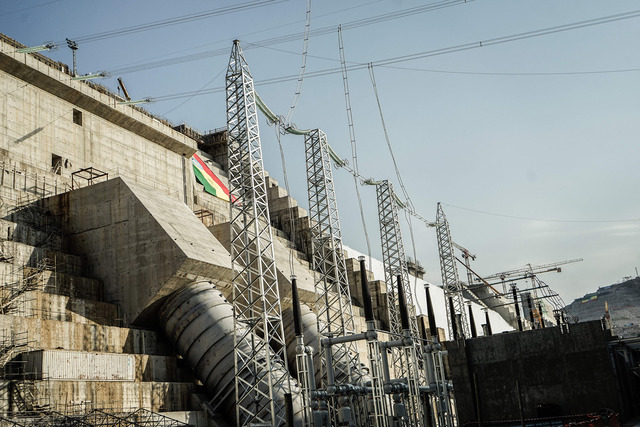 In the following article, Dr. Nemo Semret, co-founder of QRB Labs, the pioneering company that introduced Bitcoin mining to Ethiopia, shares insights on the benefits and drawbacks of the Bitcoin potential in the country, alongside the recent global media attention on this subject. (Photo: The Grand Ethiopian Renaissance Dam serves as an abundant power source for Bitcoin miners/Getty Images)
In the following article, Dr. Nemo Semret, co-founder of QRB Labs, the pioneering company that introduced Bitcoin mining to Ethiopia, shares insights on the benefits and drawbacks of the Bitcoin potential in the country, alongside the recent global media attention on this subject. (Photo: The Grand Ethiopian Renaissance Dam serves as an abundant power source for Bitcoin miners/Getty Images)
Tadias Magazine
In the last few months, media have been buzzing about Bitcoin mining in Ethiopia. For Bitcoiners, it is part of the story of Africa as the new frontier in the much desired geographic diversification of Bitcoin mining – a perspective I agree with. In mainstream Western media, it’s sometimes framed as yet another example of China in Africa. That framing, while not inaccurate, I think casts a geopolitical shadow that obscures the national perspective. Others portray it as a desperate attempt by Africans for a “quick fix” to foreign currency shortages — not false but a bit condescending and missing the bigger picture. So, let’s shine a bit more light on it from the Ethiopian point of view (Shadow, light… sorry I couldn’t muster some “dark clouds” to complete the trifecta of clichés!)
Full disclosure: I’m a co-founder of QRB Labs, the first company to introduce Bitcoin mining to the country. We’ve been quietly working since 2021 to do this the “right way” against tremendous odds. But this post is not our company’s story. It’s a skin-in-the-game opinion about how this industry should evolve for the benefit of the country. To highlight the good it can do. But also the risk of bad, and ugly.
The Good
First let’s talk about the positive. Energy in Ethiopia and Bitcoin mining are a match made in heaven.
In Ethiopia, electricity generation capacity is growing very rapidly. From 2GW in 2020 to over 10GW in the next couple of years. The Grand Ethiopian Renaissance Dam (which I’ve written about before) is the biggest and most famous step in that growth, but there are many projects contributing to it. All of course phenomenally good. Indeed, practically nothing is better for economic growth and broadly improving lives than electrification. For comparison, the average Ethiopian has 1/50th the electricity of an American. So, until we get to 100GW at least, another 1000% growth, increasing generation is unquestionably necessary.
But there’s a catch. It is extremely difficult and expensive to deliver that energy to users. In the case of Ethiopia, some estimate that $10B of investment and years of hard work are needed for transmission and distribution to catch up to generation. In the meantime, up to half of the generated energy remains unused. Which means the investment in generation takes longer to pay for itself. Meanwhile how do you finance the transmission and distribution? It’s a huge chicken and egg problem, and it’s unavoidable when there is rapid growth.
In more developed countries, capacity may not be doubling or quadrupling but a similar problem exists with solar and wind power. Huge investments in supply are needed, but the demand may not match up with the supply, since consumption peaks don’t line up perfectly with the times when the sun shines or the wind blows. Whether caused by the difference between the time of generation and consumption, or by the distance, this is the problem of “stranded energy”.
Now what if there was a way to make money from stranded energy? In Ethiopia, this revenue could help accelerate electrification! That’s where Bitcoin comes in:
Read the full article at nemozen.semret.org.
—
Related:
Ethiopia To Become The First African Country To Start Bitcoin Mining (Forbes)
Ethiopia’s $250 Million Tech Expansion In Bitcoin And AI (Forbes)
In Ethiopia, Chinese Bitcoin Miners Find a Xanadu: Next Africa (Bloomberg)
Join the conversation on Twitter and Facebook.

























